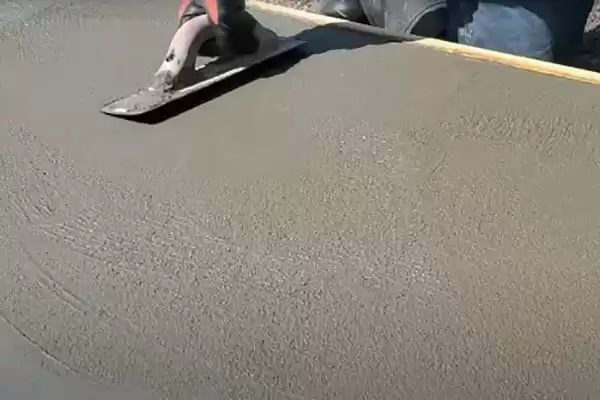Troweling is an essential part of finishing concrete. It helps create a smooth, flat, durable, and visually appealing surface. Whether you’re working on a small patio or a large industrial floor, choosing the right troweling tools is crucial for achieving the desired finish. Various types of troweling tools are available, each serving different purposes depending on the size of the job and the level of finish you want to achieve. In this article, we’ll explore the different types of tools for troweling concrete and their specific uses.
1. Hand Trowels
Hand trowels are the most basic tools used for concrete troweling. These small, handheld devices are perfect for small jobs or for working in tight spaces where larger equipment cannot reach. They are typically made of steel and come in various shapes and sizes, each serving a different purpose.
- Steel Finishing Trowels: These are flat, rectangular tools with a smooth steel blade, ideal for providing a polished finish on the surface of the concrete. They are widely used in small residential projects, such as driveways or sidewalks, to give the concrete a sleek, level finish.
- Pool Trowels: Pool trowels have rounded ends and are designed for working with curved surfaces. They help avoid lines or ridges that might be left behind by traditional flat trowels, making them perfect for finishing curved surfaces like swimming pools.
- Magnesium Float: This type of hand trowel is made from lightweight magnesium and is used to smooth out the surface of freshly poured concrete before it sets. Magnesium floats help to open the pores of the concrete, making it easier to finish with steel trowels later.
2. Power Trowels
For larger jobs, power trowels are the go-to tool. These motorized machines are used to finish concrete slabs and floors where a smooth and level surface is required. They can cover large areas quickly, making them essential for commercial or industrial projects.
- Walk-Behind Power Trowels: As the name suggests, these machines are operated by walking behind them. They feature a rotating set of blades that help smooth and level the concrete as it moves across the surface. Walk-behind trowels are suitable for medium-sized jobs, like residential floors or small commercial projects.
- Ride-On Power Trowels: Ride-on power trowels are larger, more powerful machines designed for very large concrete surfaces, such as warehouse floors, parking garages, or shopping malls. Operators sit on these machines and control their movement while the blades rotate underneath. Ride-on trowels can cover vast areas in a short amount of time, making them ideal for projects where time is a factor.
- Trowel Blades: Power trowels come with different blade options depending on the finish required. For example, float blades are used for initial passes to smooth the concrete, while finishing blades are used for later passes to achieve a high-gloss finish.
3. Edging Tools
Edging tools are used to create smooth, rounded edges along the sides of concrete slabs. These tools are essential for giving concrete a finished, professional appearance, especially along the borders of sidewalks, driveways, or patios.
- Edging Trowels: These hand tools have a slightly curved blade that allows you to create rounded edges on concrete surfaces. They help prevent the edges from chipping or cracking over time by creating a more durable, rounded edge.
- Groovers: Groovers are another type of edging tool used to create joints in concrete. These joints help control where the concrete will crack as it dries and contracts. Groovers come in various sizes, allowing you to create expansion joints that suit the size of your project.
4. Bull Floats
A bull float is a large, flat tool used to smooth out the surface of freshly poured concrete before it sets. It is typically attached to a long handle, allowing the user to work from a standing position and cover large areas quickly. Bull floats are especially useful for smoothing out concrete in the early stages of finishing, ensuring that the surface is level before it hardens.
5. Fresno Trowels
Fresno trowels are similar to bull floats, but they are designed to provide a finer finish. They are often used after the bull float to further smooth and polish the concrete surface. Fresno trowels are typically wider than hand trowels, allowing you to cover more area with each pass.
6. Combination Trowels
Combination trowels are versatile tools that can be used for both floating and finishing tasks. They can be used in both the early and later stages of the troweling process, making them a good all-around tool for many types of projects.
Conclusion
The right troweling tool for concrete depends on the size of the project and the level of finish required. For smaller projects or detailed work, hand trowels, edging tools, and floats are essential. For larger jobs, power trowels, whether walk-behind or ride-on, are indispensable. Understanding the different types of troweling tools will help ensure you choose the right one for your specific concrete project, ultimately leading to a smoother, more professional finish.
Post time: Sep-19-2024







